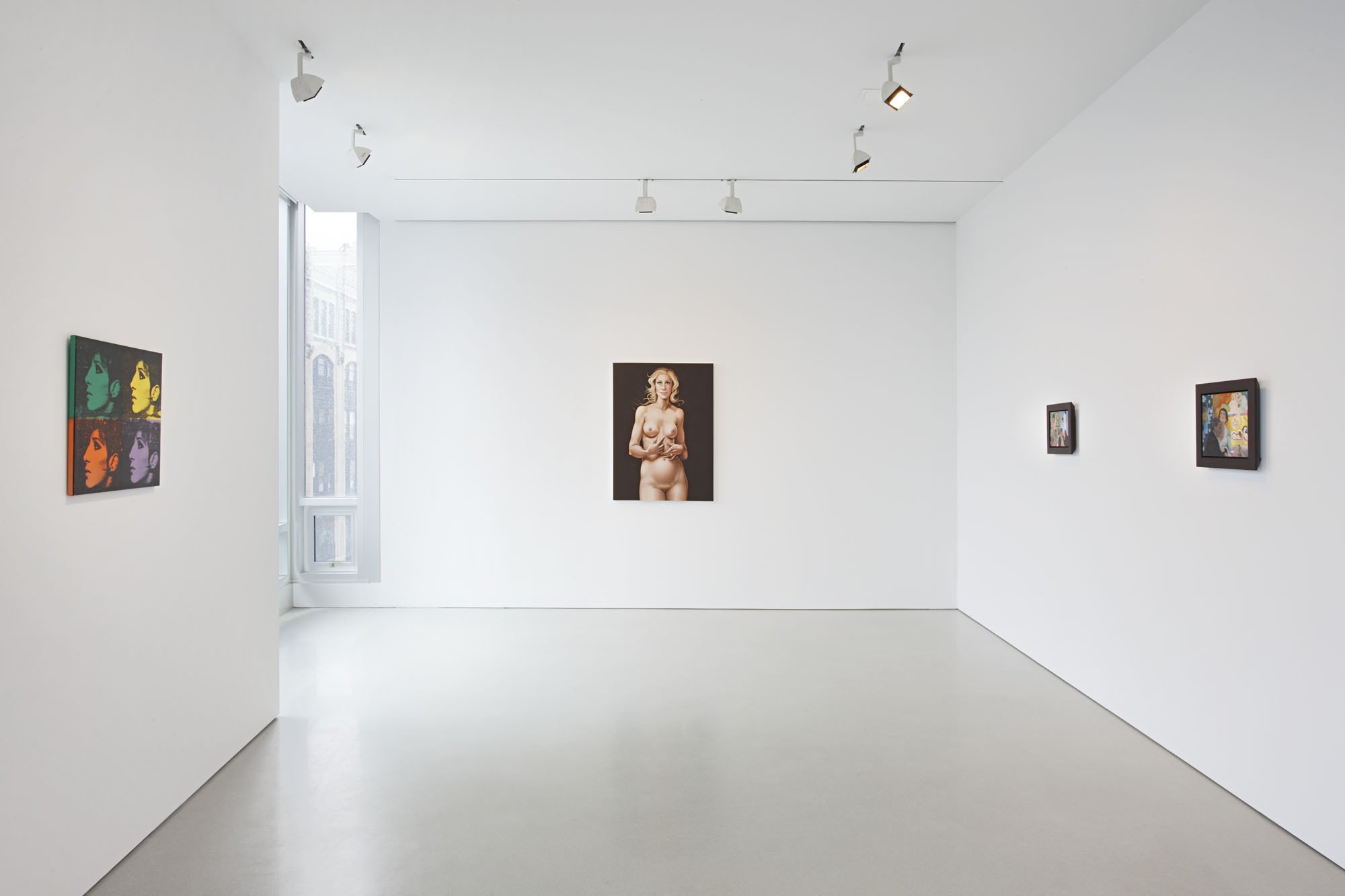Art²
SEPTEMBER 23 - DECEMBER 17, 2011
As a title, Art² refers to the use of a specific and existing artwork in the visual language of an original, contemporary artwork. In the exhibition, artists reimagine, remix, and/or incorporate a range of historic and contemporary artworks. Whether a literal transcription or a point of departure, the works in Art² demonstrate the many ways in which visual history informs the present. Artists include Barry X Ball, Delia Brown, Glenn Brown, Marc Dennis, Awol Erizku, Roe Ethridge, Hilary Harkness, Deborah Kass, Naoto Kawahara, Roy Lichtenstein, Duane Michals, Tom Molloy, Chris Ofili, William Pacak, Richard Pettibone, Richard Prince, Ken Solomon, Ena Swansea, Terri Thomas, Jim Torok, and Kehinde Wiley.
Barry X Ball’s sculpture Purity, 2008-09, directly references Antonio Corradini’s sculpture La Purità, c.1720-25, though the artist alters subtle details in his composition and chosen medium. Ball’s sculptural process involves a complex array of technology and procedures, including three-dimensional scanning, digital modeling, and computer-controlled milling, as well as traditional modes such as detailed hand-carving and polishing.
In Wild Horses, 2007, Glenn Brown distorts Jean Baptiste-Greuze’s Innocence, c.1790, a portrait of a young woman with a cherub-like face, draped in a swath of fabric tenderly cradling a lamb in her arms. Brown transforms a seemingly romantic image of purity and youth into a contemporary representation of the bizarre and fantastical: the woman’s eyes lack pupils, her flesh morphs into swirling, acid yellow brushstrokes, and the lamb is displayed as vivid red with green eyes. By recontextualizing and mutating the original image, Brown’s masterful technique imbues it with a new reading and invites viewers to examine the medium, subject, and notions of beauty.
Awol Erizku’s Girl with a Bamboo Earring, 2009, reimagines Johannes Vermeer’s Girl with a Pearl Earring, c. 1665. Erizku depicts the sitter in the same pose and attire as Vermeer’s subject, but replaces the painting’s subject with an African-American female, who gazes out of the frame with confidence and grace. Erizku rewrites this iconic image to emphasize and draws critical attention to cultural and social constructs embedded in Western art history.
Press:
“Western art history interpreted through conflicting and converging historical narratives”
— Stephanie Peterson, WhiteHot
Download Exhibition Press











